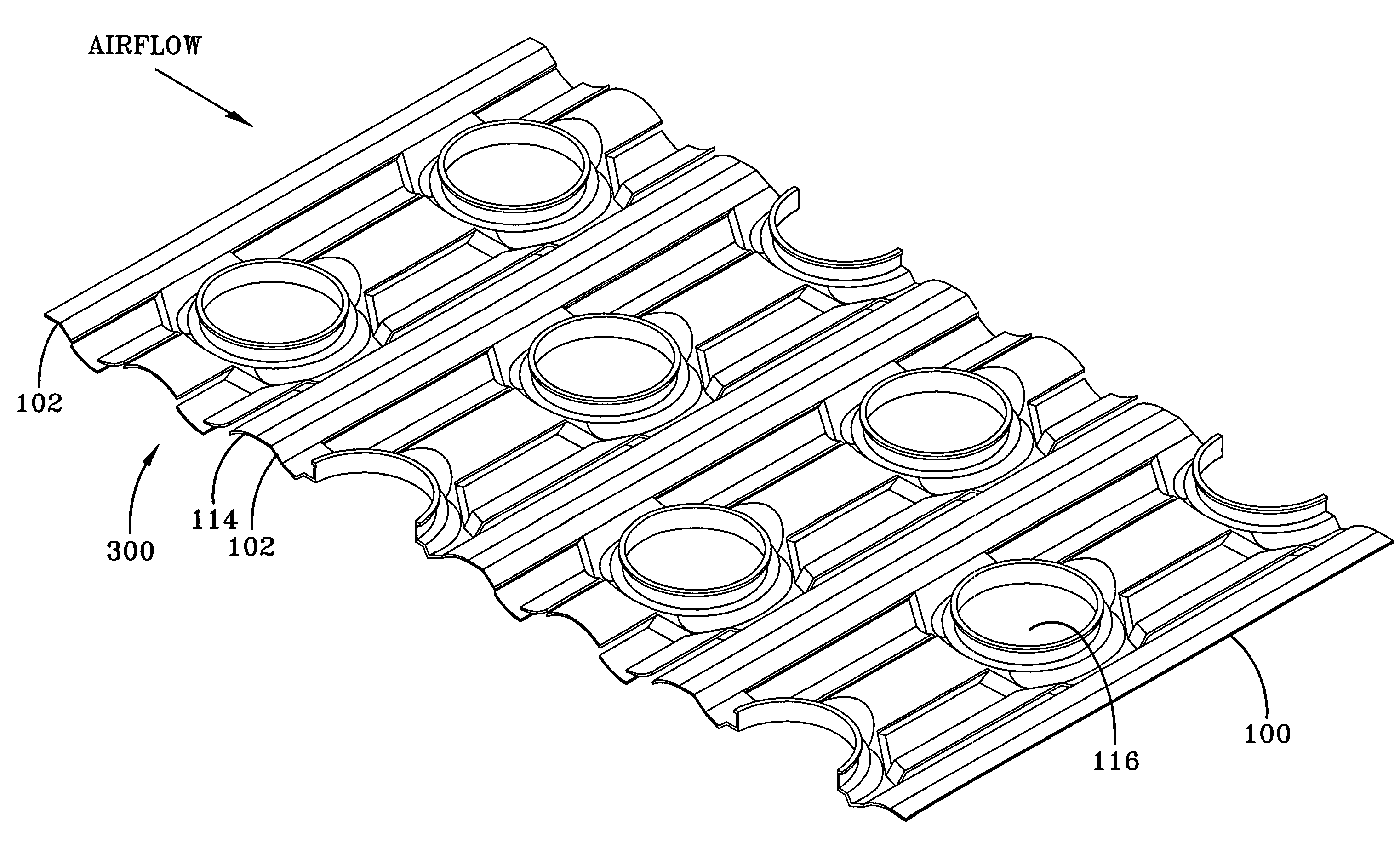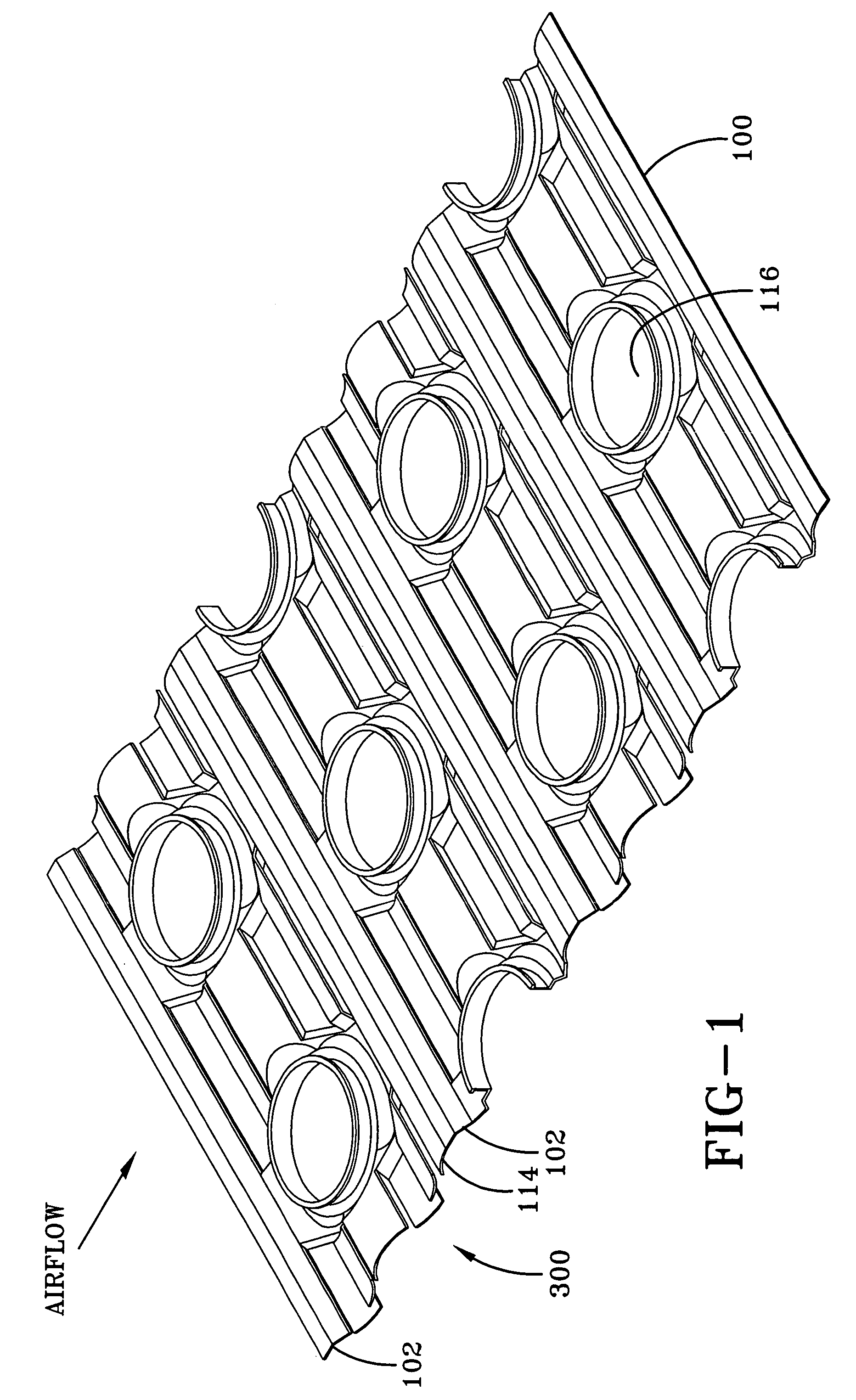High-V plate fin for a heat exchanger and method of manufacturing
a heat exchanger and high-v plate technology, applied in indirect heat exchangers, lighting and heating apparatus, laminated elements, etc., can solve the problems of large device and higher, air-side pressure drop, undesirable high pressure drop, etc., to reduce the impact of each segment's thermal wake on the heat transfer capability of downstream segments, the effect of low air-side pressure drop
- Summary
- Abstract
- Description
- Claims
- Application Information
AI Technical Summary
Benefits of technology
Problems solved by technology
Method used
Image
Examples
Embodiment Construction
[0030]FIGS. 1 and 2 illustrate one embodiment of a fin 100 having the enhanced heat transfer pattern 300 of the present invention. The fin 100 is preferably incorporated into a heat exchanger, and more preferably a heat exchanger coil assembly, to enhance the heat transfer capabilities of the heat exchanger. The enhanced heat transfer pattern 300 is configured to maximize heat transfer in all areas of the fin 100.
[0031]The enhanced heat transfer pattern 300 has seven distinct and discrete segments 102–114, which segments 102–114 will be described in greater detail below. The segments 102–114 of the enhanced heat transfer pattern 300 are substantially parallel to each row of tubes and can be repeated along the width of the fin 100 an additional number of times, as necessary to correspond to the number of tube rows. The width of the fin 100 is measured in a direction parallel to the direction of airflow through the heat exchanger. The number of times the enhanced heat transfer pattern...
PUM
| Property | Measurement | Unit |
|---|---|---|
| angle | aaaaa | aaaaa |
| thickness | aaaaa | aaaaa |
| width | aaaaa | aaaaa |
Abstract
Description
Claims
Application Information
 Login to View More
Login to View More - R&D
- Intellectual Property
- Life Sciences
- Materials
- Tech Scout
- Unparalleled Data Quality
- Higher Quality Content
- 60% Fewer Hallucinations
Browse by: Latest US Patents, China's latest patents, Technical Efficacy Thesaurus, Application Domain, Technology Topic, Popular Technical Reports.
© 2025 PatSnap. All rights reserved.Legal|Privacy policy|Modern Slavery Act Transparency Statement|Sitemap|About US| Contact US: help@patsnap.com



